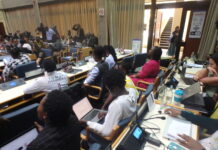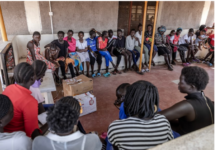By Henry Owino
Nairobi, Kenya: If you ever wondered why most female journalists never last long in newsrooms in the Kenya media industry, it is because of sexism. Sexual harassment, under-representation in decision-making roles, less pay than men, among other discriminations disproportionately subject them to gender-based violence (GBV).
The Sexist attitudes and practices are some of the behaviors contributing to these inequalities leading to the majority of the female journalists exiting the media industry. So, female journalists bear the greatest brunt of sexual harassment and gender-based violence (SGBV).
Male is to blame as the main culprits especially the seniors in the media environment. Nevertheless, male journalists are also sexually harassed, such cases are very rare. The mounting pressure of work is the nature of media.
Across the board, females or males all go through SGBV and experiences are similar but different consequences. For instance, victims who turn down sexual advances by editors are normally either interdicted with duties or denied media opportunities. This is usually a ploy developed to frustrate them in order for targeted fellows to give in.
Pauline Amollo (not her real name) resigned as a journalist in less than a year upon employment in one of the mainstream outlets. She has quit the media in the industry completely a career she began as a television intern reporter, rising through the ranks to become a news anchor.
“I climbed up the ladder within three months of my internship in the newsroom. Initially, I had joined as a general reporter, fresh from campus hence naïve of so much including sexual harassment traps in the media industry,” Amollo explained.
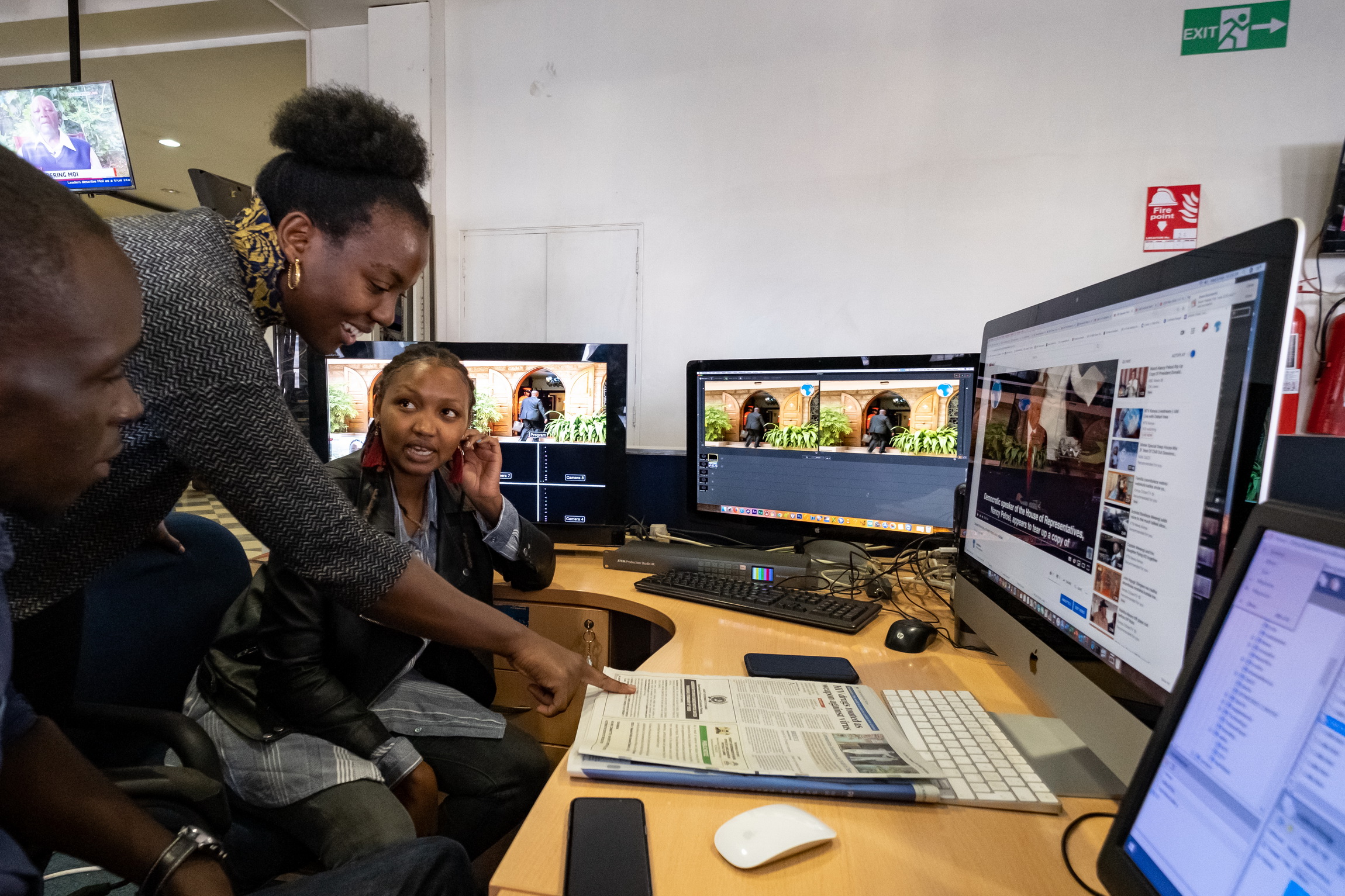
Forms of SGBV
Amollo admitted it never downed to her that regular explicit or implicit sexual overtones and other personal rewards were meant to lure her. In fact, the traps are silent tricks in exchange for sexual favors and the end. Her perpetrator knew very well the buttons to tap, when and how without the victim noticing it as sexual harassment but as personal ties.
“My ignorance on sexual harassment propelled seniors to take advantage of me. It began by nasty text messages(sexting), or nude photos, touch or slap on the hip or butt, suggestive staring, frequent hug with intentions, kiss, peeping at cleavage forcefully, late assignments, among other traps not forgetting lunch offers and free rides back home,” Amollo regretted.
As a victim of SGBV, Amollo informed one of her colleagues about it. Consequently, the secret was revealed to Human Resource Manager (HRM), the female one who acted. “Of course, I had to be summoned to disclose my frustrations including promotion in exchange for sexual favors,” Amollo revealed.
Amollo regrets that after summoning, it was no longer secret. Her perpetrator overheard it and henceforth the special treatment she used to get was never the same again. There were lots of witch-hunts to upset her. For example, criticisms of not appealing to viewers, stammering words while on air, poor articulations, poor choice of dress-up style among other fancy meager dresses.
“Having sex with my boss was not a big deal for me because I wanted to become a superstar on TV. However, after securing employment and secrets of our deals got out hands, the boss ensured I was terminated,” she disclosed.
Amollo advises sexual harassment in the media is real and most perpetrators are supervisors or line managers. When a reporter refuses, she is denied an opportunity to do a story or grow career-wise unless they have sex.
Victim consequences
Being naïve and desperate for employment made Amollo accept the employer’s demands such as accompanying him on a date. She secured an employment opportunity but later on lost the job.
Amollo is just one such victim of SGBV in newsrooms across the media industry. Many female journalists go through such horrifying instances but quiet, something that, encourages perpetrators.
As an experienced victim, Amollo is cautioning her fellow female journalists in newsrooms that SGBV is real and incomes in various forms; verbal, written, physical, and visual. Only a few may be in a position to detect it while others would think of it happening out of for ve their work at newsrooms.
There are so many female journalists like Amollo who experience the same or even worse in the media industry but cannot share for fear of interdiction. Such journalists are free to report their grievances with the Media Council of Kenya (MCK) to take appropriate action.
MCK interventions on SGBV
According to MCK, 40 cases of female journalists across the country have been reported to them on SGBV in newsrooms. The number could be more but unreported. However, because of privacy and the nature of cases, MCK is unable to share them publicly. The cases are being pursued with lots of cautions and justice, will prevail.
Dina Ondari, Manager, Press Freedom, Safety & Advocacy at MCK admitted SGBV is rife among female journalists, especially by their seniors. She stated survey in 2020 on sexual harassment in the media environment showed that almost 72 percent of journalists, mostly women experienced the vice.
“We carried out a survey on sexual harassment in the media in Kenya in collaboration with Article 19 East Africa. Out of 202 respondents both male and female in and outside newsrooms, women are worse affected,” toOndari asserted. “The findings of the survey were to inform decisions on strategic interventions towards the prevention, management, and response to the vice,” she explained.
According to Victor Bwire, Director, Media Training and Development at the MCK, other similar surveys showed that there is a high prevalence rate of SGBV in the Kenyan media. One of the surveys indicated that 77.5% of female journalists compared to 29.7% of their male counterparts in Kenya have experienced sexual harassment in the newsrooms.
Bwire revealed surveys prompted MCK to react by inviting the Kenya Media Sector Working Group (KMSWG), and convened at Maanzoni Lodge, Machakos County on March 5, 2021, for 3 days. At the meeting, they discussed SGBV among a number of matters relating to enhancing media sustainability in Kenya.
“We had 15 organizations that formed the KMSWG with each team mandated with obligations to oversee and spearhead specific matter by coming up with solutions. So AMWIK was assigned to lead SGBV in media,” Bwire clarified.
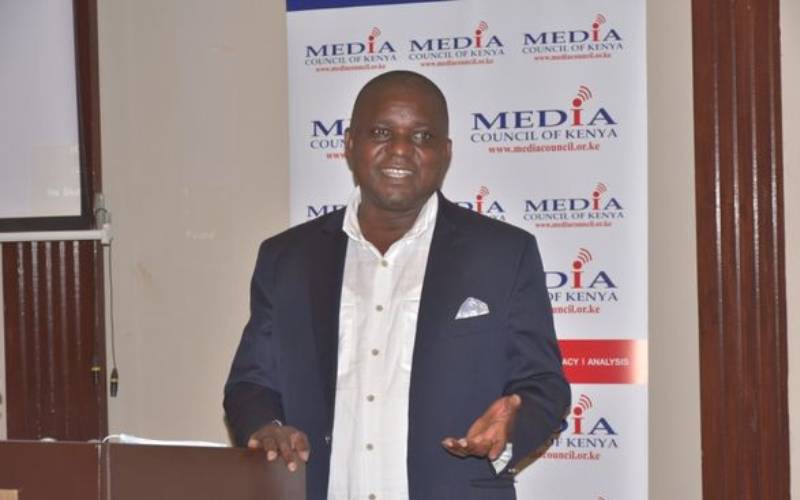
AMWIK at the forefront against SGBV
According to Lilian Museka, Program Officer, AMWIK, so far, organizations have mobilized journalists drawn across the 47 counties in the country and trained on SGBV issues. The trained journalists have also trained other colleagues and formed groups to help tame the vice in newsrooms.
Museka described the trained journalists are leading other groups in discussions from Western Kenya, the Coastal region, Eastern Kenya, Nairobi, and neighboring counties. The team meets once per week via zoom to train, brainstorm and chart the way forward in establishing how to end SGBV in the media industry.
“Majority of trained journalists are men who are in most cases culprits of SGBV. This is a strategy to ensure men get involved in the fight against this vice in and outside newsrooms,” Museka disclosed.
Judie Kaberia, CEO, of AMWIK said the organization is committed to ending SGBV in the media industry. To this end, they have consolidated with Journalists for Human Rights (JHR), in partnership with the KMSWG and committees mandated to address sexual harassment in the Kenya media.
Kaberia affirmed that as one of its first major undertakings, the committee has introduced a model on sexual harassment policy for the industry. It is being scrutinized and upon approval, it will be adopted by Kenya media.
She pointed out the initiative is led by AMWIK while other committee members include the Kenya Editors Guild, Kenya Union of Journalists (KUJ), FIDA, Article 19 East Africa, Kenya Correspondent Association (KCA), IREX, and Federation of Kenya Employers.
“The committee’s core mandate is to encourage the Kenya media industry to promote a gender-inclusive culture in newsrooms, for which sexual harassment and other related policies are being introduced. The committee will also train newsrooms on these policies to ensure their effective implementation,” Kaberia explained.
Kaberia said: “While sexual harassment has an impact on everyone in the industry, women have borne the brunt of it. Impunity is a key factor that continues to perpetuate sexual harassment in the media: “It is no longer in doubt that female journalists are confronted by a disturbing legacy of inequality that impedes the pace of their personal development. Many female journalists have left the industry prematurely due to sexual harassment.”
The CEO of AMWIK is pleased that groups of journalists and platforms were created to tackle sexual harassment delivery. “I am delighted that we are making progress and there are outlets where journalists can now report sexual harassment,” she affirmed.
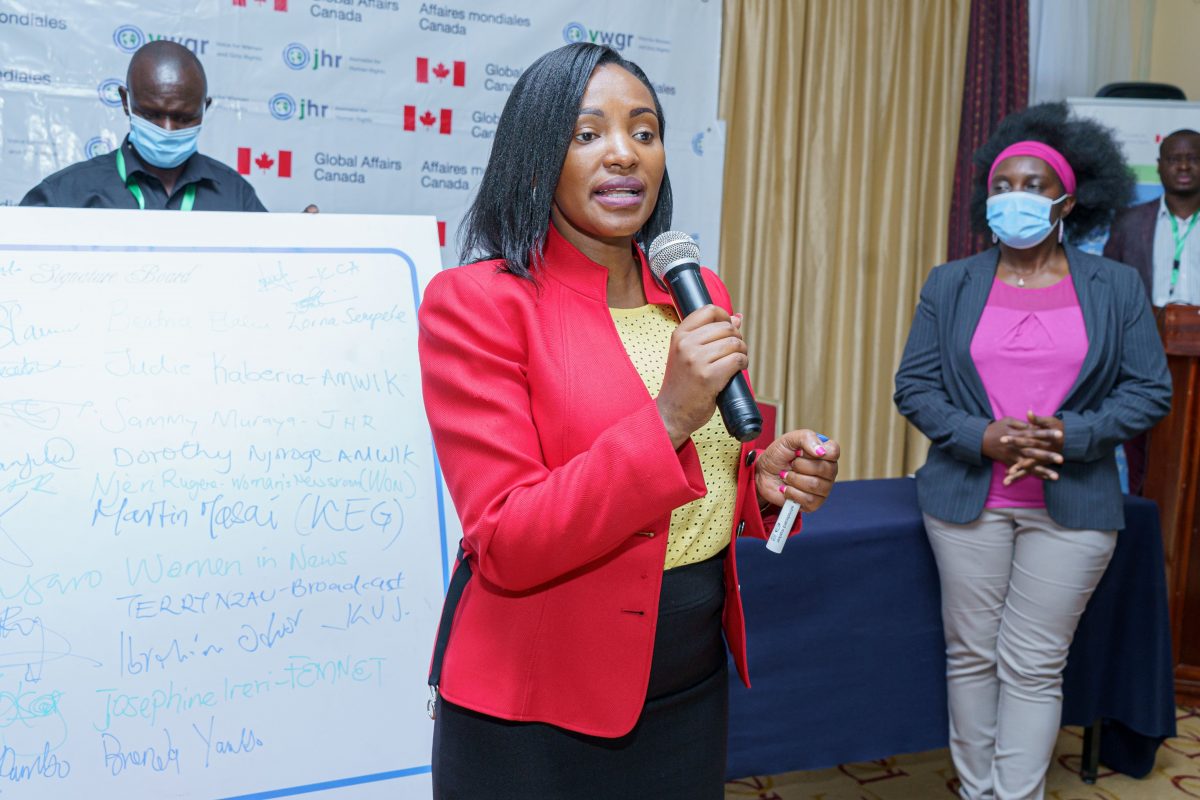
Challenges of tackling SGBV
Despite the pervasiveness of SGBV in the media houses, much is yet to be done to create a conducive working environment for female journalists. From sexual harassment, online trolling, and institutionalized violence, female journalists are bearing the greatest brunt of the vice, forcing some to prematurely exit the industry notwithstanding their prowess.
Worst is that they are condemned into silence because the perpetrators are the senior managers or editors and thus even with the exit, justice is not served.
“The silence is what makes sexual harassment, most common in the newsroom to continue,” Samuel Muraya, Project Manager at JHR and a member of Kenya Editor’s Guild (KEG) lamented.
“Most of the victims are quiet for fear of being victimized. But breaking the silence is what will put sexual harassment to an end. We want to see perpetrators brought to book,” Muraya emphasized.
Punishing the perpetrators will have to start with having stringent human resource policies as existing gender policies in the newsrooms are weak and even implementing them is problematic, he noted.
A 2020 survey dubbed; “Reporting Newsroom Sexual Harassment in Kenya, Nigeria, and South Africa” report in which AMWIK participated, found that on average, women experienced sexual harassment four times more than men.
Of the 202 news professionals interviewed, 20 percent reported having experienced sexual harassment at least five times at work. This was a similar case for the 8.1 percent of men surveyed.
Muraya said male interns do get harassed by senior female journalists, especially the editors. The report, however, spells a resounding worry. That 90 percent of the harassed journalists chose not to report to their employer.
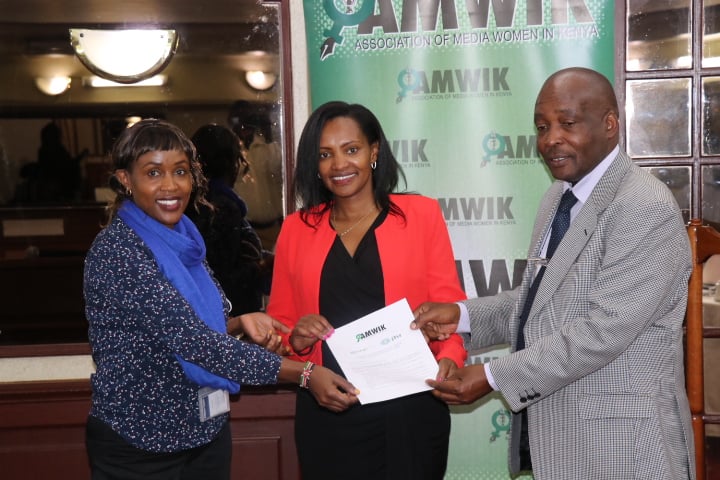
Marceline Nyambala, puts greater responsibility on the media houses on tackling SGBV in the newsrooms, which she says is largely anchored on unequal gender power relations.
Nyambala noted institutionalized violence, which outplays on underpaying of female journalists on the basis of being the lesser gender is the denial of their human rights.
“Institutionalized violence equals economic violence. And this is happening because of the practice of patriarchy in the newsrooms. There has to be a change in how women’s work and role in the newsroom is valued,” Nyambala claimed.
“Owing to SGBV, some women have been forced to give up their ambitions of building careers in media despite their competitive skills,” she added.


